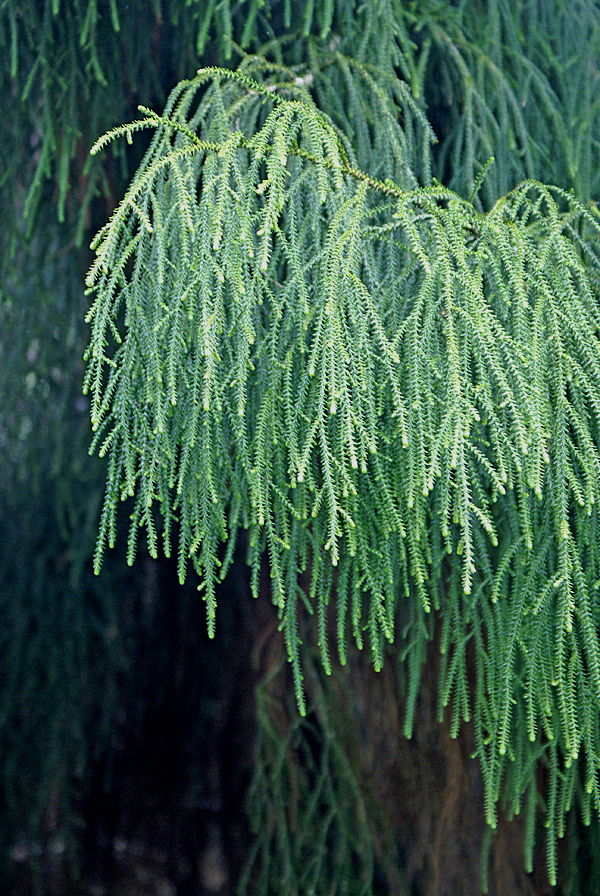
Photo courtesy of T.E.R.R.A.I.N.
Rimu: A tree rooted in Maori culture
New Zealand is very abundant in plant life. Some flora are more common than others, while some are rare. Probably the most common native conifer you can find in New Zealand is the Rimu Tree. The Rimu grows throughout the North Island, South Island and Rakiura. The largest concentration of Rimu can be seen on the West Coast of the South Island, although the biggest ones are in mixed podocarp forests near Taupo, in the North Island.
You won't be able to miss the Rimu tree since it stands out, literally. It is a very tall canopy tree, sometimes reaching up to heights of 50 meters. Its trunk can reach up to 2 meters in diameter. These slow-growing conifers have very long lifespans. They can reach 700 to 800 years old. Some even live up to 1000 years old, probably even more! These trees have been in Maori culture and way of life for a very long time and have a lot of uses. Rimu is considered to be one of New Zealand's finest timbers, probably ranking only second to the infamous Kauri tree. It was the main building timber used by European settlers in the south of Waikato, where Kauri trees did not grow. The Maori also used Rimu to make long spears for personal defense and to protect sites.
Maori History of Rimu
Rimu's bark was often used to produce fires, being known that rimu wood produced little smoke and unusual smell. The Maori believe that the wood could help ward evil spirits, especially during night time. Rimu was also used in Moko or traditional Maori tattoos. The heartwood of the rimu, along with the grub aawhato, found near the roots of the rata tree, were burnt and ground to powder using stone; this was then used as a pigment for the traditional tattoo.
The Maori used the fruit of the Rimu tree as a food source. The fruit only forms at the very end of the branches, which made harvesting rimu fruit a dangerous task. When eaten in large quantities though, the fruit has a constipating effect. To counteract it, a juice made from Tutu flowers was drunk. The Rimu tree also plays a vital role in the preservation and mating cycle of the Kākāpō, an extremely endangered flightless, nocturnal parrot. Rimu's periodic mast-seeding helps Kākāpō mating efforts synchronize. The unripe Rimu fruit acts as a stimulant for both sexes to help them breed, while the ripe Rimu fruit contains the perfect combination of nutrients and energy for growing Kākāpō chicks.
Captain Cook even made beer from the Rimu tree. He made the beer to help prevent scurvy among his crew, as well as to keep their morale high. Rimu also had tons of medicinal uses. The bark was used for healing ulcers and running sores, the leaves were used for skin sores. Its gum was used as a styptic to help stop bleeding wounds, Rimu heartwood was also made into tooth powder and used to remove the discolouration of teeth.
While on your Bay of Islands Adventure Cruise, take time to visit and see this majestic, towering conifer that has helped make New Zealand what it is today. There are tons of interesting things to explore in the Bay of Islands, do not hesitate to ask The Rock Bay of Islands Adventure Cruise to arrange a walking tour for you along the gorgeous walking tracks in Paihia, check out our day and overnight cruises available in the Bay of Islands to complete your Northland adventure.
TESTIMONIALS
"Thanks to Jonny and the team for such a great day! We choose a private day hire to celebrate a 40th Birthday and everyone really enjoyed it. We were lucky...
"It was amazing ending 2022 on the Rock! Authentic experience with friendly hostel/ family vibe. Weather wasn't the best but the adventures surely...
"WOW what an amazing experience we had! We had a family trip on The Rock which included all of the grandkids and grandparents, and everyone in...
"I wanted to organise an overnight cruise in the Bay of Islands with a group of 25 friends and this was the absolutely PERFECT company to do it with! Jonny...
"Absolutely recommend!! Jonny, Erin, Otulea and Leilani really took care of us during our work Christmas doo.Nothing was too much to ask. Food - Amazing,...
